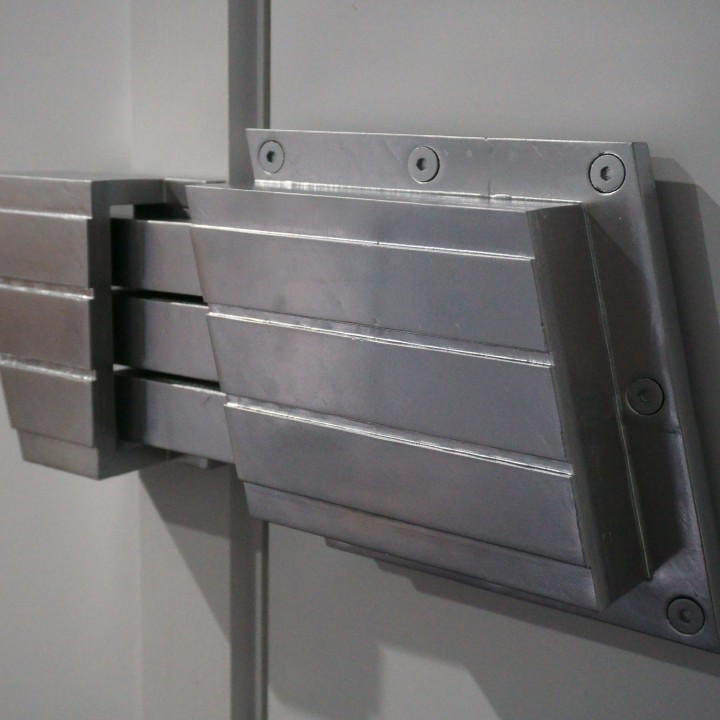wonkytoaster
New Member
Hello everyone,
I need the help of the Community,
I am working on a project, I need to create a device that can open or close a door lock via Bluetooth, this device works on batteries and it is just a simple adapter that you plug on your existing door lock, you just put the key Inside and it should be able to turn the key to open the door.
I have made a lots of research and tested a lots of things, at this moment, for prototyping I am using a Bluetooth chip nrf51822 to control a stepper motor via Bluetooth, the stepper motor is this one : https://www.pololu.com/product/2267,
and the driver I use to control it is this one : https://www.pololu.com/product/2966
I thought it would be enough and that I will have enough power to turn the key in the door lock, but obviously not, I tried on a door prototype with a new lock that works very smoothly and it has some difficulty to work, I power the system with 2 Li ion batteries (https://www.tinytronics.nl/shop/nl/...650-li-ion-batterij-2600mah-5.2a-icr18650-26j) that should give enough power I think.
When I noticed that the motor didn't give enough torque to turn the key I printed in 3D a planetary gearbox with a 5:1 ratio, so the torque is multiply by 5, but there again it doesn't work well. (I tried on a normal door and it was just impossible to open)
most of all, using a planetary gearbox reduce the speed of the motor drastically and I'm afraid that it taked hours to open the door.
some device exist on the market that require only 4AA batteries and it looks like they can open every doors, I Wonder how it works.
So my question is the Following one :
Should I use a stepper motor? Maybe I should use a servo motor? is it because of the stepper motor I use that I can't open the door?
The thing is I wanted to use a stepper motor because I can do multiple turns with a stepper motor with very few angle, some dorrs needs to turn the key 6 time to be open, whereas than with a servo I can't, it is limited to a certain angle and I can't do multiple turns. Also I Don't know how I could say to the servo how to stop when the door is open if I can't turn it on a precise number a turn.(I hope you understand what I mean ^^)
So if you I have any idea or suggestion, everything is welcome!
Thank you!
I need the help of the Community,
I am working on a project, I need to create a device that can open or close a door lock via Bluetooth, this device works on batteries and it is just a simple adapter that you plug on your existing door lock, you just put the key Inside and it should be able to turn the key to open the door.
I have made a lots of research and tested a lots of things, at this moment, for prototyping I am using a Bluetooth chip nrf51822 to control a stepper motor via Bluetooth, the stepper motor is this one : https://www.pololu.com/product/2267,
and the driver I use to control it is this one : https://www.pololu.com/product/2966
I thought it would be enough and that I will have enough power to turn the key in the door lock, but obviously not, I tried on a door prototype with a new lock that works very smoothly and it has some difficulty to work, I power the system with 2 Li ion batteries (https://www.tinytronics.nl/shop/nl/...650-li-ion-batterij-2600mah-5.2a-icr18650-26j) that should give enough power I think.
When I noticed that the motor didn't give enough torque to turn the key I printed in 3D a planetary gearbox with a 5:1 ratio, so the torque is multiply by 5, but there again it doesn't work well. (I tried on a normal door and it was just impossible to open)
most of all, using a planetary gearbox reduce the speed of the motor drastically and I'm afraid that it taked hours to open the door.
some device exist on the market that require only 4AA batteries and it looks like they can open every doors, I Wonder how it works.
So my question is the Following one :
Should I use a stepper motor? Maybe I should use a servo motor? is it because of the stepper motor I use that I can't open the door?
The thing is I wanted to use a stepper motor because I can do multiple turns with a stepper motor with very few angle, some dorrs needs to turn the key 6 time to be open, whereas than with a servo I can't, it is limited to a certain angle and I can't do multiple turns. Also I Don't know how I could say to the servo how to stop when the door is open if I can't turn it on a precise number a turn.(I hope you understand what I mean ^^)
So if you I have any idea or suggestion, everything is welcome!
Thank you!

